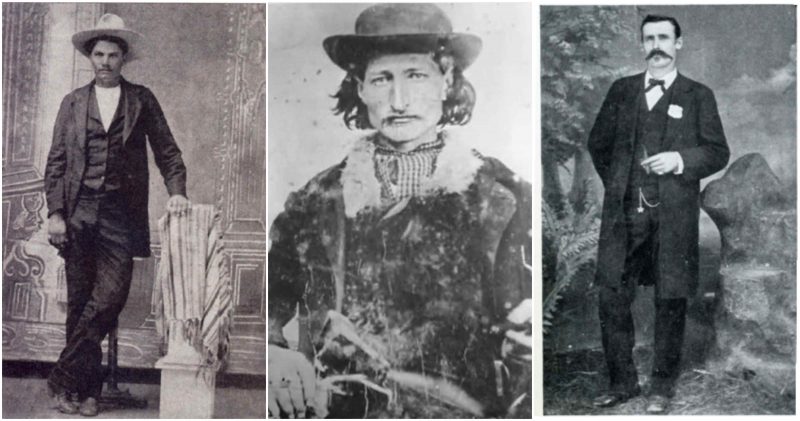One thing the Old West didn’t lack was men who were ready for a gunfight. Men such as these were called gunmen, pistoleers, and shootists; the term gunslinger is only a Hollywood creation. They may not have dressed like Clint Eastwood, with a holster slung low on the hips, but these gunmen made names for themselves nonetheless. Here are 10 of the most well-known.
James “Wild Bill” Hickok
James Butler Hickok is one of the most famous gunmen of the Old West. A gunfighter, gambler, showman, and peace officer, Hickok may have killed more than 100 men.
Hickok was born on May 27, 1837, to William Alonzo and Polly Butler Hickok in Illinois. His father was an ardent abolitionist, and their home may have been a stopping point on the Underground Railroad. Hickock was an expert shooter at a young age and built up a good reputation in his hometown. In 1858, he became a constable in Monticello Township, and several years later he joined the Russell, Waddell & Majors Freight Company, the owners of the Pony Express.
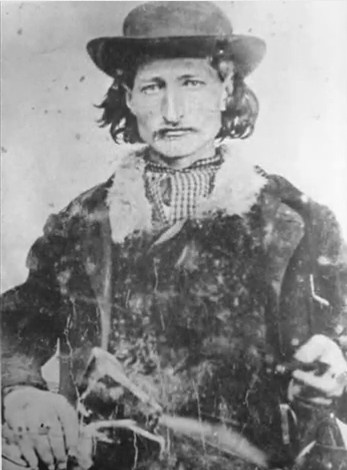
In 1865, Hickok and David Tutt had several disagreements, culminating in a shootout in which Hickok killed Tutt with a single bullet from 75 yards away. Hickock was acquitted of all charges, having claimed self-defense.
While played five-card-draw poker in Deadwood, South Dakota, on August 2, 1876, Hickok was shot point blank by Jack McCall as revenge for a perceived insult. In Hickok’s hand when he was killed were aces and eights, later known as the “Dead Man’s Hand.”
John Wesley Hardin
John Wesley Hardin was born in 1853, in Texas, to James Gibson “Gip” Hardin and Mary Elizabeth Dixson. Hardin Senior was a Methodist minister who settled his family in Trinity County, Texas, in 1859. He started a school for local children, including his own. When the Civil War broke out, John Wesley attempted to run away to join the Confederate Army.
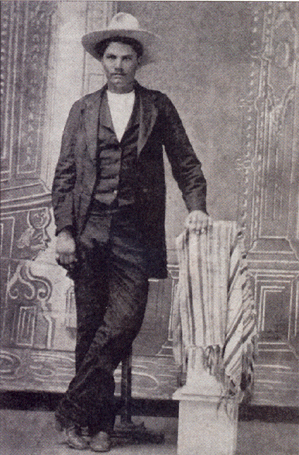
Hardin killed for the first time in November of 1868 at the age of 15 years, when he shot a former slave who allegedly attacked him with a stick. Because Union soldiers occupied Texas at the time, his father advised him to hide. When his location was discovered, he killed the three Union soldiers sent to capture him and was forced to run away from home.
Hardin rode with outlaw Frank Polk in Navarro County until Polk was arrested for murder. Hardin drifted around, leaving a trail of bodies behind him. He shot a man in the eye in Pisgah on a bet and killed a black man in Leon County, Texas. In 1870, Hardin was winning a card game with Benjamin Bradley in Hill County when Bradley threatened him with a knife. Hardin walked away but was later confronted by Bradley, who shot at Hardin and missed. Hardin replied with a shot to Bradley’s head and one to his chest. Later in the same month, he killed a man in an argument in Limestone County, and two weeks later shot a man who attempted to rob him.
In 1871, Hardin was arrested for the murder of Texas marshal Laban John Hoffman, but he escaped after killing another police officer, Jim Smalley. After more killings over the next three years, Hardin was captured by the Texas Rangers and sentenced to 25 years at Texas State Prison in Huntsville.
While he served his time, Hardin studied religion and law, but he suffered from bad health. He was released from his sentence after having served 17 years, and became a lawyer in El Paso. In April of 1895, John Selman, Sr. shot Hardin in the back of the head, killing him, after an altercation with Selman Jr. Hardin is buried in El Paso.
John King Fisher
John King Fisher was born in 1853 in Texas, to Jobe and Lucinda Warren Fisher. He was in trouble from the age of 16 for stealing horses and was in and out of prison. In 1870, he joined a group of outlaws raiding ranches in Mexico. After an argument with the other gang members, Fisher killed three of them, took over as the leader, and killed seven Mexican bandits.

In 1884, Fisher and his friend Ben Thompson attended a play at the Turner Hall Opera House in San Antonio. After the play, Fisher and Thompson went to the Vaudeville Variety Theater and headed upstairs to meet with the owner, Joe Foster. There they found themselves victims of an ambush. Thompson was shot in the head and died instantly. Fisher drew his guns but was shot 13 times and killed. He was buried on his ranch, and later his remains were moved to Pioneer Cemetery in Uvalde, Texas.
Tom Horn, Jr.
Thomas Horn, Jr. was born in Missouri on November 21, 1860 to Thomas S. Horn, Sr. and Mary Ann Maricha Miller Horn. He was abused by his father, which motivated him to leave home at 16. The U.S. Calvary hired him as a scout and interpreter during the Apache Wars. He was part of the mission to find Geronimo and was present at his surrender.
In the 1880s, Horn was popular as a tracker and a bounty hunter; he was hired by the Pinkerton Detective Agency but was forced to resign after he was associated with the murders of 17 men. In 1901, Horn got involved in a feud between the Miller and Nickell families in Iron Mountain, Wyoming. Fourteen-year-old Willie Nickell was found murdered; a month later his father, Kels, was killed and most of his stock was slaughtered. Because of a dubious identification by two of the Nickell children, and Horn’s drunken boasts about the murder of young Willie, he was arrested and convicted of murder.
Thomas Horn was hanged the day before his 43rd birthday in 1903 and buried in Columbia Cemetery, Boulder, Colorado.
Jim “Killer” Miller
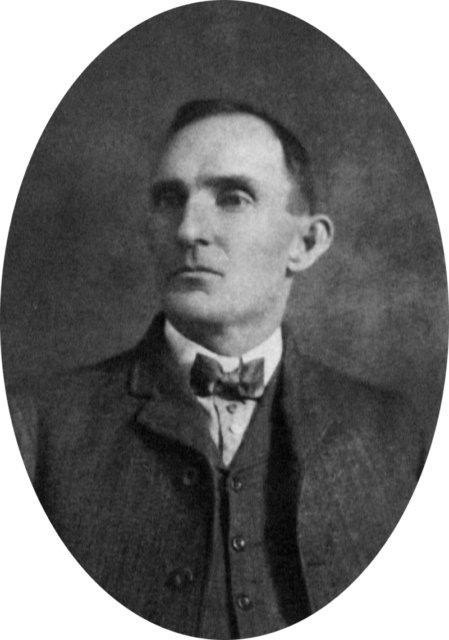
James Brown Miller was born October 25, 1861, in Van Buren, Arkansas, to Jacob and Cynthia Basham Miller, but he was raised in Texas. In 1884, Miller shot John Thomas Coop, his sister’s husband, in the head after an argument. Miller spent time as a town marshal in Pecos and married Sallie Clements in 1891. For a short time, Miller was an upstanding citizen and was committed to the Methodist church.
After a longstanding feud with Pecos Sheriff George A. Frazer, Miller shot Frazer in a Toyah, Texas, saloon. Several members of the prosecution and men who had testified against Miller were mysteriously killed. Miller was never convicted for any of the deaths. In 1900, Miller began offering his services as a paid assassin, committing over six murders.
After the murder of Allen Bobbitt, he was arrested and jailed. Breaking into the jail, an angry mob took Miller and two other prisoners to the gallows, where they were hanged.
Sam Bass
Sam Bass was born on July 21, 1851, in Mitchell, Indiana. After failing to succeed in business, he joined a group of outlaws and began robbing stagecoaches. After several such robberies, Bass and his gang decided to rob the Union Pacific gold train from San Francisco, collecting more than $60,000. It is still the largest robbery of any train on the Union Pacific Railroad. He was pursued by the Pinkerton National Detective Agency and the Texas Rangers.
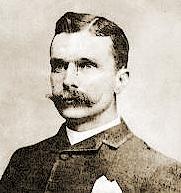
After one of the gang turned informant, Bass and his men were ambushed by Texas Ranger Sergeant Richard Ware and Ranger George Herold in Round Rock, Texas, where the gang attempted to rob the Williamson County Bank. Bass killed Williamson County Deputy Sheriff A. W. Grimes. Bass himself was shot, but he escaped and was found lying in a field west of Round Rock. He died the next day. He was buried in Round Rock Cemetery, and the road to the cemetery was later named Sam Bass Road.
Dallas Stoudenmire
Dallas Stoudenmire was born in Bullock County, Alabama, on December 11, 1845, to Lewis and Elizabeth Stoudenmire. When he was 15, he attempted to join the Confederacy to fight in the Civil War, but he was discharged when his true age was revealed. A few years later, he re-enlisted and served as a private in Company F, 45th Alabama Infantry Regiment. He was wounded several times but stayed in service until the end of the war.
Stoudenmire had a reputation for being tough and short-tempered when he was drinking. After moving to El Paso, Texas, to serve as sheriff, he killed three men before the end of his third day in the “Four Dead in Five Seconds Gunfight.”
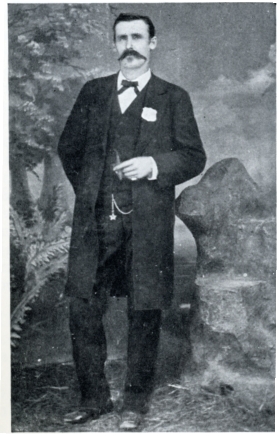
In less than a year, he had killed six more men in gunfights while as sheriff. Thus he ultimately became known as one of the most feared lawmen in Texas. Stoudenmire got involved in a feud with members of the Manning family, which ended when he and three of the Manning brothers got into a gunfight. Stoudenmire was shot from behind by James Manning and died instantly. He was buried in Alleyton Cemetery in Colorado County, Texas.
Clay Allison
Robert Clay Allison was born to Jeremiah Scotland Allison, a Texas cattle rancher and Presbyterian minister, and Mariah Ruth Brown Allison on September 2, 1841, in Tennessee. Allison fought for the Confederacy under Captain W. H. Jackson and General Nathan Bedford Forrest in the Civil War. The Allison family moved to New Mexico after the war.
In January of 1874, Allison and fellow outlaw Chunk Colbert enjoyed a race on their horses and afterward went to dinner at the Clifton House in Colfax County. The two had a history of disagreements, and with no warning Colbert pulled out his pistol to shoot Allison. But when his gun bumped the table as he drew, Allison reacted by shooting Colbert in the head. He was asked why he was having dinner with a man who wanted to kill him and Allison replied, “I wouldn’t want to send a man to hell on an empty stomach.”
Over the next several years, Allison was reported to have killed several men over disagreements, and in one case he decapitated a man and brought the severed head into a saloon. He was also known to have participated in lynchings and vigilante murders.
In 1880, Allison relocated to Mobeetie, Texas, where he met and married America Medora “Dora” McCulloch. Together they bought a ranch near the Pecos River. Allison died in 1887 when he broke his neck after falling from a wagon. He was buried in Pecos Cemetery; his body was later moved to the courtyard next to the Orient Hotel Museum.
Wyatt Earp
Wyatt Berry Stapp Earp was born in Warren County, Illinois, on March 19, 1848. His father, Nicholas Porter Earp, moved the family to Iowa, where Earp spent most of his childhood. He married Urilla Sutherland, but she and their unborn child died of typhoid fever about a year later. After the death of his wife, Earp began drinking heavily and drifted around until he joined his brother in Wichita, Kansas, in 1874.
After several years of working as an officer of the law, he moved to Dodge City along with his brother. Wyatt became a marshal and met and befriended John “Doc” Holliday. By 1879 he had moved to Tombstone with his brothers Virgil and James, and got involved in a feud with Tom and Frank McLaury and Ike and Billy Clanton. The result was the gunfight at the O.K. Corral in 1881. After his brother Morgan was killed in retaliation, Wyatt embarked on a mission to kill everyone associated with Morgan’s death.

Wyatt moved to California and married Josephine Marcus in 1882. They moved to Idaho, opened a saloon, and mined for gold. In 1899 the Earps went to Alaska during the Gold Rush and again opened a successful saloon. They returned to California around 1911 and settled in Los Angeles, where they became a popular fixture in Hollywood as Earp served as a technical adviser for Old West films. Wyatt died on January 13, 1929, in Los Angeles at the age of 80; his ashes were interred in Jewish Hills of Eternity Cemetery in Colma, California.
Billy the Kid
Henry McCarty, a.k.a. William H. Bonney, was born in 1859 in New York City to Patrick McCarty and Catherine Devine. He started out by getting caught stealing food, clothing, and guns in 1875, but he escaped his captors and made his way to Arizona. In 1877 he argued with and killed a blacksmith.
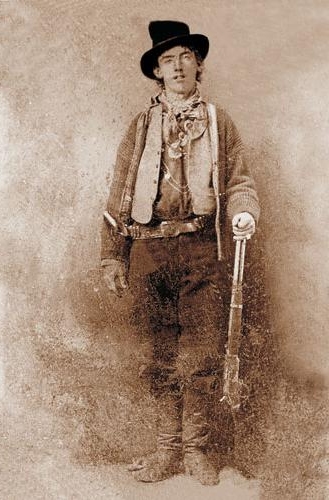
Later that year he was deputized during the Lincoln County War and joined lawmen searching for a group of men who had murdered a rancher. The group called themselves “the Regulators,” but soon it gained its own reputation for violence, and its members were branded as outlaws. The group went on a killing spree–killing three people within three days, including a sheriff and a deputy. When the group was broken up by law-enforcement officers, the Kid escaped and shot a gambler in a New Mexico saloon. After more problems with the law, Bonney was captured and sentenced to death. He escaped and killed the men guarding him. After three months, Sheriff Pat Garrett and two deputies shot and killed the Kid at Fort Sumner on July 14, 1881.
While many of the deaths attributed to these gunmen were committed within the scope of the law, folklore and stories as to the number of people they each killed continue to add to their mystique.
